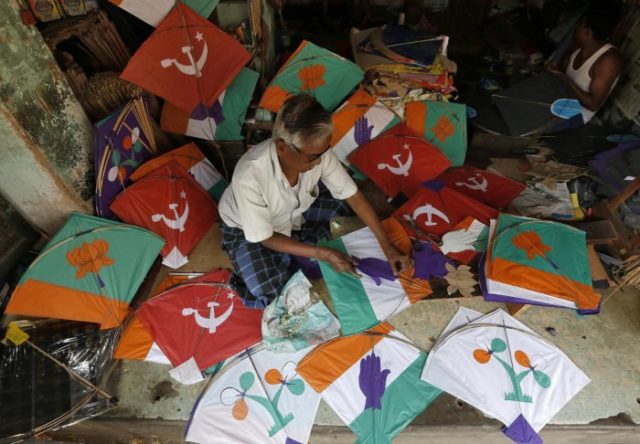Disclaimer: Originally published in June 2019. It is being republished since it still remains an interesting topic till today.
FlippED is An ED Original style wherein two bloggers come together to share their opposing or orthogonal perspectives on an interesting subject.
The 7th and the last phase of the General Elections have come to an end and the result will be declared tomorrow.
This is probably the reason why the debate over whether First-Past-The-Post (FPTP ) system or Proportional Representation (PR) is better for choosing the winner in Lok Sabha elections has sparked a flame again.
Here are the two systems.
First-Past-The-Post (FPTP)
FPTP system is also known as the simple majority system because in this method, the candidate with the highest number of votes in a constituency is declared as the winner.
This system is used in India in direct elections to the Lok Sabha and State Legislative Assemblies.
Why our blogger Himanshi Parihar stands in favor of First Pass The Poll System
FPTP is already being used and it has various benefits over other methodologies.
1. Simple and population friendly
FPTP is very simple, its uncomplicated nature works in favour of the huge Indian population.
Explaining the working of a new, complicated voting system to the massive 900 million voting population of India (as of 2019) will be a Herculean task. PR is better for voting where the number of voters is few, for eg. Rajya Sabha.
India has a huge population. Then the number of candidates fighting from a constituency is also usually huge. In 2019, a constituency in Gujarat had 371 candidates fighting for a seat.
Had PR been the voting system, imagine the time it would have time taken for the whole constituency to vote. In a country like India, PR can be impractical and cumbersome.
2. Mitigates aristocracy and dynastic democracy
India is already infamous for the notorious dynastic party system practiced by all – large and small, national and regional – parties. The lack of internal democracy in Indian parties is worrisome.
In Proportional Representation, the party President decides the list of candidates. This may lead to the formation of a more aristocratic-styled pseudo-democracy while FPTP promotes internal democracy within the party.
3. Voters are choosers
Voters also benefit in the FPTP system as they get to choose between people as well as parties. They have the opportunity to assess the performance of a candidate, rather than having to accept a list of candidates presented by a party, as they’d have to in the PR system.
4. Pro federalism

In the FPTP system, elections are conducted constituency-wise. This gives the parties an incentive to field regional candidates and focus on regional issues.
PR has the potential of being heavily inclined in favour of the Centre. FPTP, on the other hand, will help in maintaining the federal character of India.
At first, it may seem to be regressive for the small regional parties to cope with the larger ones under the FPTP system.
But the smaller regional parties have the benefit of regional connect and because of this many a time local candidates beat the heavy-weight candidates of the larger national parties.
Also Read: Demystified: Can EVMs Really Be Hacked?
Proportional Representation
Why our blogger Anjali Tripathi prefers Proportional Representation:
Today, the topic of the debate is FPTP v Proportional Representation and I firmly stand in favour of the concept of Proportional Representation.
To understand my arguments, we first need to analyze what this concept speaks.
What Does Proportional Representation System Mean?
Proportional representation describes a system where the distribution of seats corresponds closely with the proportion of the total votes cast for each party or individual candidate. It is assumed that this system offers a better chance of representation and election to inferior political parties.
In layman’s language, in this system, the number of seats a political party acquires in the election depends upon the number of votes cast in its favour.
In India, the Lok Sabha elections are held on the footsteps of FPTP and the Rajya Sabha elections are held on the basis of the Proportional Representation system.
Advantages of Proportional Representation System
It is often argued that India has tried and tested the Proportional Representation system through Rajya Sabha elections and it is time we should use this system as an electoral system in India.
For a country like India where there exist many regional political parties but none gets their fair share of representation in nationwide elections, the Proportional Representation system may prove to be vital.
1. Fair share

The small and inferior regional parties find a better standing in the parliament than they do under the present system. The vote share acquired by a party goes into the drain under FPTP if it doesn’t translate into a higher number of seat.
However, this is not the case in FPTP and thus, the Proportional Representation system boosts the confidence of regional political organizations.
2. Each vote counts
This system may be instrumental in increasing the voting percentage. Under FPTP, the perception may be that the power of one’s vote isn’t so much so as to make a vital change but under Proportional Representation, the value of each vote is more than that under FPTP. This experiment has shown results in New Zealand.
3. Better representation
Since there is no scope of one-party majority under this system, there is a fair representation of each political party and each section of voters in the parliament.

Now since we have laid for you the advantages of both the systems, you are the ones who need to decide what you want, as the young future of India.
Image Credits: Google Images
Sources: News 18, UK engage, The Week
You can find the bloggers at @inocentlysane and @parihar_tweets
More Recommendations:
In Pics: Interesting Facts About The 2019 Lok Sabha Elections You Should Know






























